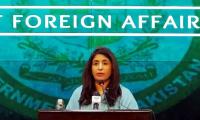In April, Chinese President Xi Jinping and Indian Prime Minister Narendra Modi held informal meetings and vowed to reduce border tensions, referring to last year’s military standoff in the Doklam area in the Himalayas.
Both leaders spent a few days in the Chinese city of Wuhan. The main objective of the bilateral discussions was to find ways to mend the strained ties between India and China. Following the meetings, India’s foreign ministry issued a statement that emphasised the need to maintain peace in the border region of both countries.
As per the statement, both sides will take measures “to strengthen communication in order to build trust and mutual understanding and enhance predictability and effectiveness in the management of border affairs”. It added that both parties will “implement various confidence-building measures”. Similarly, China’s foreign ministry said that Xi had told Modi that “a friendly Sino-Indian relationship is a significant, positive factor in safeguarding world stability”.
The informal bilateral dialogue should be welcomed as reduced hostility between the two Asian giants could have positive implications for South Asia. During and after the summit, both sides refrained from mentioning any alterations in their earlier stance vis-a-vis Beijing’s Belt and Road Initiative – particularly its main artery in the form of CPEC.
India’s official stance is heavily influenced by the fact that the corridor passes through Gilgit-Baltistan (GB), which it considers to be part of the disputed territory of Jammu and Kashmir. As a result, Narendra Modi had termed the project “unacceptable” during his visit to Beijing in June 2015, soon after Pakistan and China signed numerous MoUs related to CPEC.
Analysts have argued that concerns over infrastructural projects going through GB could perhaps be a pretext put forward by India. But the reality is that India is highly sceptical about China’s growing role in the Indian Ocean. India is apprehensive that once “Gwadar grows to [become] the immense port China envisions it to become, China will need to take on a [larger] direct or indirect security role”.
Consequently, India perceives CPEC as China’s geopolitical gambit and security project rather than an economic opportunity to strengthen regional trade and connectivity. However, their disagreements about the Belt and Road Initiative and CPEC were not mentioned the statements issued by either the Indian or Chinese foreign ministries.
Although both sides have once again expressed their intention to resolve border disputes, it seems unlikely that they can make a breakthrough in solving long-standing border disagreements if India and China’s past conduct is taken into account. Unlike the bilateral disputes between India and Pakistan, a positive aspect of the Sino-Indian relations is that both countries have mostly remained ‘frenemies’ since the 1962 war. Although there are bilateral disputes and disagreements, trade has substantially increased between both countries in recent years and India is now China’s largest trading partner.
Despite considerable bilateral trade, and regular visits and interactions among leaders from both India and China, the relationship is still “marked by suspicion, ambivalence, and hedging rather than [tipping] decisively in the direction of amity or antagonism”. Although Beijing has tried to allay Delhi’s concerns by stressing the ‘win-win’ potential of the Belt and Road Initiative for greater regional connectivity and shared prosperity, there are concerns that the corridor could enhance geopolitical tension in the region, particularly between India and Pakistan.
In a timely book titled ‘The New Great Game: China and South and Central Asia in the Era of Reform’, various academics have explored the dynamics of China’s relations with South Asian countries. In the context of China-India relations, it has argued that “Indian security elites view China as their number-one strategic challenge”. In contrast, the book maintains that despite numerous issues with Pakistan, there is an understanding that “Pakistan does not pose a significant, long-term strategic threat to India”.
Therefore, “the main future challenge for Indian security managers is not Pakistan but China…it possesses a more powerful military than does India. China’s defence budget is roughly 2.5 times India’s and the Chinese active-duty military is approximately 1.7 times larger”. Many Indian strategists have concluded that “China does not seek an egalitarian international commons in the Asia-Pacific region but rather prefers some form of Chinese-led hierarchy or hegemony”. Hence, Indian perspectives about the Belt and Road Initiative and CPEC are different from those advocated by China and Pakistan.
Given this line of thinking vis-a-vis China, India’s response at the domestic level is military modernisation. India was the largest arms purchaser from 2008 to 2012. It has been investing heavily in nuclear delivery capabilities. At the external level, India has exhibited a marked departure from its non-aligned and independent foreign policy by getting closer to the US in recent years.
However, at the same time, “many Indian security elites worry that the US will prove to be a particularly unreliable partner in years ahead”. There is a strong perception that the US could be less interested in the Indian-Ocean Asia-Pacific region in the future due to its own fiscal problems; the looming defence cuts; and the impending withdrawal from Afghanistan. As a result, there is a perception that America seems to be a poor option. Perhaps, Indian policymakers could learn some lessons from the US-Pakistan relations in this context.
How can the South Asian region become more integrated and interdependent? In terms of size and economic influence, the region is clearly dominated by India as it contributes to about 80 percent of the region’s GDP.
However, interregional trade in South Asia accounts for just five percent of overall trade. Almost all major countries have strong trade and investment ties with China.
There is a broad consensus that South Asian countries welcome Chinese investments “both for the economic benefits and as a counterbalance to India”. It is argued that “China’s increased engagement, especially its investments in infrastructure projects, is fostering interdependence and regional integration that far exceed what has been accomplished as a result of [Saarc]”. There is more interaction and interconnectivity than ever before and “China has provided the catalyst for this transformation”.
In view of this, the Belt and Road Initiative and CPEC could bring benefits to India as well. In this context, one of the arguments that have been advanced involves India’s participation in the China-led Asian Investment Infrastructure Bank (AIIB). Advocates of participation in CPEC often cite India’s AIIB membership to dismiss the country’s reservations about the project. If India could choose to join the China-led AIIB, which may also ultimately fund some CPEC projects, there is little harm in participating in the connectivity corridor.
In addition, India should consider exploring the prospect of CPEC being expanded to include Indian Punjab and Indian Occupied Kashmir. Even in Pakistan, some analysts have observed that a true ‘trade utopia’ from CPEC can only be accomplished if India also becomes part of the project. In this context, it is argued that if Pakistan grants India overland access to Afghanistan and Central Asia, it will truly connect and transform the entire region. Trade and financial linkages between China and South Asia are still limited and there is enormous potential to expand them and “unlock gains from trade, knowledge spillovers, risk sharing and diversification”.
In order to reap the true potential of CPEC, it is vital for China to not only resolve disputes with India but also bring Pakistan and India to the negotiating table and “work together to build a more peaceful and prosperous future” for South Asia.
The writer is a postdoctoral research fellow at the German Development Institute at Bonn, Germany.
Email: muradali.uom@gmail.com
The cases of Attabad Lake and Gwadar simply highlight the many tragedies that exist around the country
Reaffirming loyalty to democracy as a problem solver can be a good starting point
Unfortunately, Pakistani films and TV dramas have seldom ventured beyond domestic intrigues and love triangles
A woman walks past a building of the International Monetary Fund. — AFP/FileThe annual and spring meetings of the...
Late Benazir Bhutto's daughter Asifa Bhutto Zardari addresses the Christian community in Bihar Colony on January 23,...







